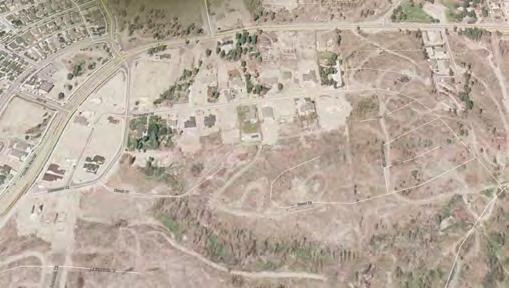Summary of key findings
An Impact Analysis for the National Guide for Wildland-Urban Interface (WUI) Fires This report estimates the impacts of the National Research Council’s National Guide for Wildland-Urban Interface (WUI) Fires (“the National WUI Guide” or “the Guide”) through the ratio of the avoided future losses to the capital and maintenance costs (called the benefit-cost ratio, BCR). The National WUI Guide provides direction on how to build and maintain fire-resilient buildings near wildlands. It calls either for structures to be built with non-combustible materials or for surrounding vegetation to be controlled, or both. Satisfying the National WUI Guide’s recommendations appears to offer benefits that greatly exceed its costs. The benefits come from avoiding future property and life-safety losses. Ten key findings of our review of the Guide are:
1
2
New houses built to satisfy the National WUI Guide recommendations save over 30:1. Benefits reach 34 times the cost. Costs can be below $5 per square foot, or 2% of construction cost. When neighbours cooperate to control vegetation, costs drop by two-thirds and the BCR triples. Retrofitting saves up to 14:1. Modifying existing houses costs more – from $10 to $20 per square foot – but can still be very cost-effective. Neighbourhood cooperation to control vegetation reduces costs by two-thirds and increases BCR three times.
3
Communities save up to 14:1, when the costs to homeowners, municipalities, and utilities are accounted for.
4
Using the Guide nationally saves up to 4:1, avoiding $500 billion in future losses at a cost of $125 billion. It creates 20,000 long-term jobs, saves 2,300 lives, avoids 17,000 non-fatal injuries and cases of post-traumatic stress disorder, and increases tax revenues by $1 billion.
5
6
Nature-based solutions save even more. Vegetation control needs maintenance and cooperation, but costs only one-third as much as structural measures, producing BCRs as high as 100:1. Indigenous communities have long used fire stewardship to reduce risk. Stakeholders working together to follow the National WUI Guide can lower barriers and costs, increasing the nation’s benefit.
7
Climate change makes adaptation more urgent. Accounting for climate change reveals that benefits increase by 40% as temperatures rise, humidity falls, and the fire season lengthens.
8
Municipalities and utilities share the cost burden. Water supply, access, and utility vegetation management matter. Municipalities and utilities bear much of the cost, with benefits affecting wide swaths of the community.
9
The benefit estimates in this study of the National WUI Guide are conservatively low. Some real benefits to health, historical and cultural value, peace of mind, pets, mementos, and others can be difficult to quantify and are omitted here.
10
There’s more to do. To further reduce fire loss, NRC can address the science of climate change, the engineering details to develop the National WUI Guide into a standard, and the social issues in Indigenous and northern communities. The study suggests 12 such topics.
1








